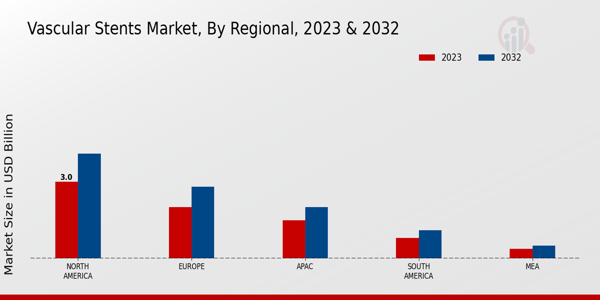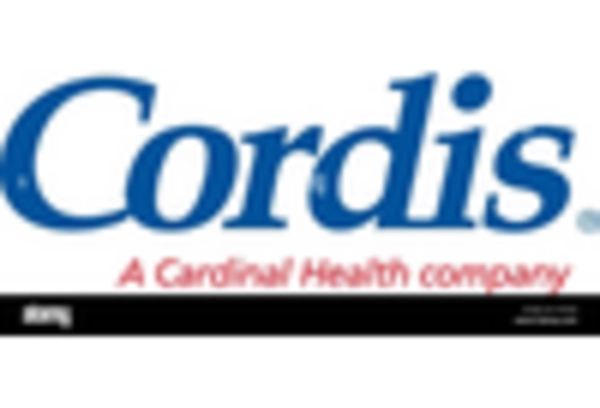Rising Prevalence of Cardiovascular Diseases
The increasing incidence of cardiovascular diseases is a primary driver for the Vascular Stents Market. As lifestyle-related factors such as obesity, sedentary behavior, and unhealthy diets become more prevalent, the demand for vascular interventions is expected to rise. Data indicates that cardiovascular diseases remain a leading cause of mortality worldwide, necessitating effective treatment options. This trend is likely to propel the adoption of vascular stents, as they are critical in managing conditions such as coronary artery disease. The growing awareness of cardiovascular health and the importance of early intervention may further stimulate market growth, as healthcare systems prioritize preventive measures and treatment options in the Vascular Stents Market.
Regulatory Support and Reimbursement Policies
Regulatory support and favorable reimbursement policies are crucial drivers for the Vascular Stents Market. Governments and health authorities are increasingly recognizing the importance of vascular interventions in improving patient outcomes. As a result, there is a trend towards streamlined approval processes for new stent technologies, which may encourage innovation and market entry. Additionally, favorable reimbursement frameworks are likely to enhance the affordability and accessibility of vascular stents, making them more appealing to healthcare providers and patients alike. This supportive regulatory environment could stimulate growth in the Vascular Stents Market, as stakeholders seek to capitalize on emerging opportunities.
Technological Advancements in Vascular Stents
The Vascular Stents Market is experiencing a notable transformation due to rapid technological advancements. Innovations such as drug-eluting stents and bioresorbable stents are enhancing patient outcomes and reducing complications. The introduction of advanced materials and coatings is improving stent performance, leading to higher adoption rates among healthcare providers. According to recent data, the market for drug-eluting stents is projected to grow significantly, driven by their effectiveness in preventing restenosis. Furthermore, the integration of digital technologies, such as imaging and monitoring systems, is likely to enhance procedural precision and patient safety. As these technologies evolve, they may contribute to a more efficient healthcare delivery system, ultimately benefiting the Vascular Stents Market.
Aging Population and Increased Healthcare Expenditure
The aging population is a significant factor influencing the Vascular Stents Market. As individuals age, the risk of developing cardiovascular diseases escalates, leading to a higher demand for vascular interventions. This demographic shift is accompanied by increased healthcare expenditure, as governments and private sectors invest more in advanced medical technologies. Reports suggest that healthcare spending is projected to rise, particularly in regions with aging populations, thereby enhancing the accessibility of vascular stents. This trend may lead to a more robust market environment, as healthcare providers seek to adopt innovative solutions to meet the needs of older patients in the Vascular Stents Market.
Growing Awareness and Education on Cardiovascular Health
The growing awareness and education surrounding cardiovascular health are pivotal in shaping the Vascular Stents Market. Public health campaigns and educational initiatives are increasingly informing individuals about the risks associated with cardiovascular diseases and the importance of early detection and treatment. This heightened awareness is likely to lead to an increase in screening and diagnostic procedures, subsequently driving demand for vascular stents. Furthermore, as patients become more informed about their treatment options, they may actively seek out vascular interventions, thereby contributing to market growth. The emphasis on cardiovascular health education may play a vital role in the future trajectory of the Vascular Stents Market.


















Leave a Comment